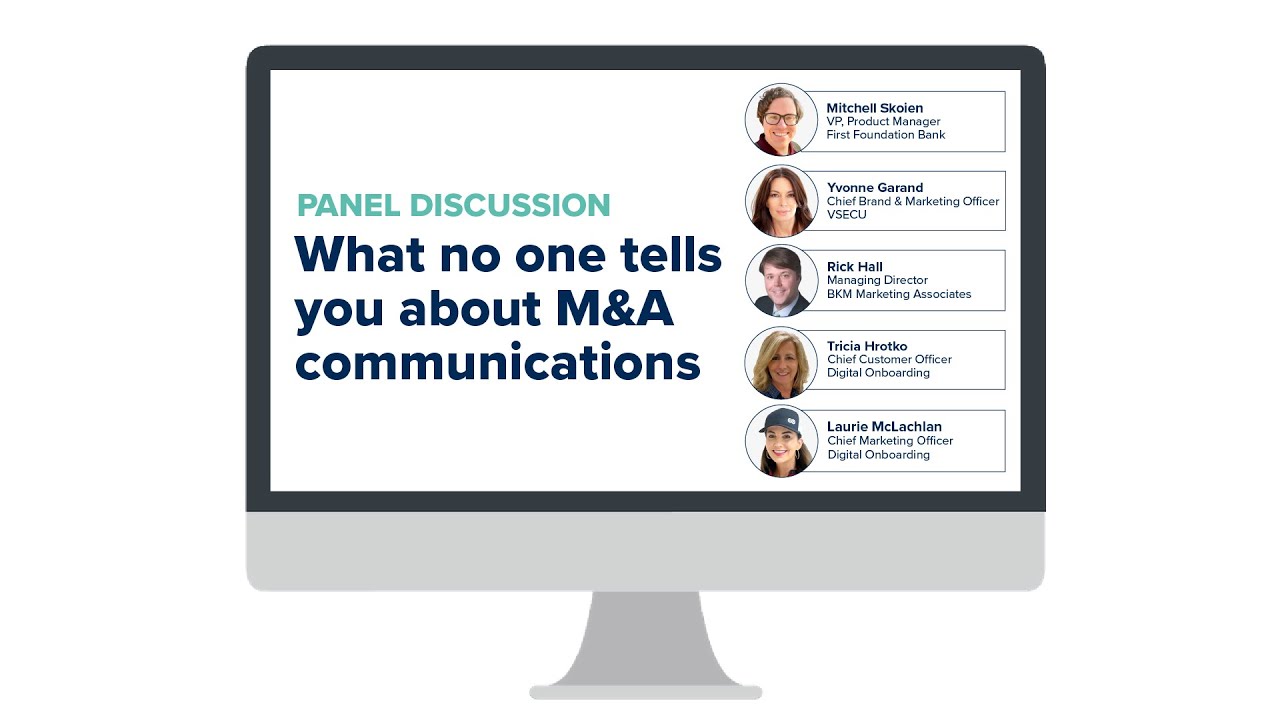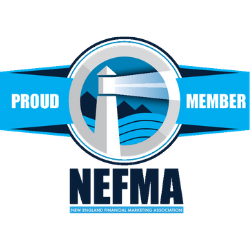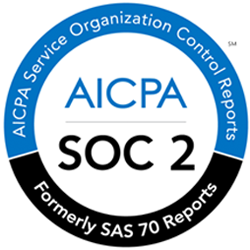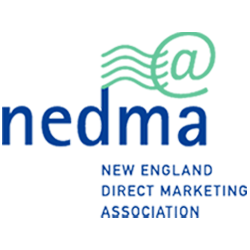Data Jam Session – Mergers and Acquisitions
Driving M&A Decisions Through Data Intelligence
Hosted by Segmint
MODERATOR: Kent Blackshear, VP of Business Development, Segmint
FEATURED GUESTS: Adam Craig, President, Segmint; Rick Hall, Managing Director of Banking and Financial Services, Bank Merger Marketing by BKM Marketing
Data Driving M&A Podcast Transcript
Thursday, January 27, 2022 | Full Length = 40:15 minutes
Kent Blacksher 0:02
Hello, everyone, and welcome to another Data Jam. I’m your host Kent Blacksher, VP of biz dev here at segment and excited to chat with our panelists today. This should be a very interesting discussion about the landscape in and around m&a and, and all of those issues that many of you have questions on, or watching as things kind of well are always evolving and in the financial industry landscape, but we’re we’re well versed in but joining me first of all, is Rick Hall. Rick is the managing director for banking and financial services at BKM marketing associates. Rick, a pleasure to have you today. Good to be with you. And also joining us from segment is our president, the one and only Adam Craig. Adam, thanks for taking time out of your schedule to be with us today.
Adam Craig 0:47
No problem. Thanks, Kent.
Kent Blacksher 0:50
Before we kind of jump in really curious for our audience who you know, has joined us on previous data jam sessions, Rick would like to get a little more framework on your expertise. You know, we’re very excited to have you. But for those watching, can you give us a little lay of the land kind of your day to day, your history and what you’re doing in this space?
Rick Hall 1:10
Sure, I’ve spent the better part of my 30 year career either working inside of financial institutions, or consulting with them. In the role that I’m in right now became a marketing we we do an extensive amount of integrated programs for financial services, primarily banks, community banks. But we have a kind of a unique practice that we’ve really built out over the last half a dozen years or so focusing on the merger and acquisition space, primarily working with acquirers in terms of understanding who their customers are, that they’re requiring, and building more robust communications programs around that, really focusing on retention, and obviously trying to get once the company’s new customers or clients have been on boarded, that you really give them the best opportunity for growing this relationships. So that’s pretty much what I do on a day to day basis.
Kent Blacksher 2:10
That’s fantastic. And why we’re so excited to have you. And really one of the big highlights of our session today is really kind of picking your brain a little bit. And obviously, the expertise of Adam who’s got a diverse background as it pertains to this space as well and the leader of our organization. But Rick, can you kind of guess set the scene, if you will, right now on the landscape of as you know, in the m&a landscape? Where are you seeing things right now, maybe as a compared to what was recently and then the follow up to that, just so you know, I’ll kind of be asking you and Adam, your thoughts in and around the growth of Neo banks and fintechs, as that’s kind of impacting it, but But first, kind of give me the holistic view of what you’re seeing right now, if you don’t mind?
Rick Hall 2:56
Well, I think, you know, obviously, the the elephant in the room is held much COVID impacted. The merger business, particularly, you know, in 2020, you know, coming through 2021, we rebounded in terms of the number of deals a little over 200 that were done, and we expect that number, again, from an analyst perspective, I think we’re thinking that those numbers are going to be at or maybe even a little bit above and 2022. The difference that I think that we’ve seen in the in the m&a space is the fact that we’ve seen larger combinations. We haven’t seen that for a number of years. And so while we focus primarily on the regional and community banking space, we’ve seen a lot of larger combinations. US Bank making an acquisition, PNC making an acquisition, which is which is relatively unique, and what what we’ve seen in the past year, but we expect things to get back to kind of where our pace has been around to, you know, in around 4% 5% consolidation. And, you know, we’ll start to see smaller combinations, as those become realistic and, you know, it’s a little bit like a marriage, right, you’ve got to try to find the right partner.
Kent Blacksher 4:13
That’s, that’s very accurate. Now, I’m actually going to skip ahead I mentioned and I’ll come back to it I do want to talk about kind of where you see the Neo banks and fintechs but you brought up you kind of you kicked off with the pandemic and one of the areas that I’d hoped to ask and I’m also want to get your your take on this as well Adam, as it pertains to what you’re seeing and maybe your industry specifically. But you mentioned the pandemic slowing down the m&a space a little bit and you know, and I guess the the rates and things like that flowing a little differently now or the rate of acquisitions and and some of the mix ups. When do you see that kind of getting back to air quote normal? What kind of cadence are you and your team expecting to see things settle Is that a pipe dream? Will there ever be any sort of kind of normality in, you know, when you think of m&a as a whole, let alone this kind of, dare I say volatile industry or one with so much flux?
Rick Hall 5:12
I mean, I think we’re, we’re, we’re pretty close to being back. Right. I mean, I think, you know, the number of deals may have been a little bit smaller, but the size of the deals being so much bigger than that, that was kind of a hallmark for for the past year. I think the challenge right now, quite frankly, is a little bit in the pricing in terms of, you know, are people willing to pay what sellers are looking to get? You know, the, the, the old adage is, banks are sold not bought, you know, is, you know, still pretty true. I think that what we ultimately I think we’ll see is a lot more of a challenge and trying to find the right partner, like I just mentioned, you know, trying to figure out what’s the right mix, and without completely, you know, uprooting your culture or, you know, your commitment to the community and figure out where are those synergies and where those fits? You know, that that’s where that’s where it becomes a little unknown. And certainly that COVID made that a lot more difficult.
Kent Blacksher 6:19
Fair enough. And I’m not going to point it, you know, virtually lead us into kind of what I was framing up, you’re starting to, what are you seeing from Neo banks? And fintechs? How are they impacting the m&a space? Kind of right now? And what are you seeing?
Adam Craig 6:36
Yeah, that’s a great question. Thanks. You know, I think it’s really interesting, it used to be that if you were a bank or a credit union, and you wanted to know who your competition was, all you had to do is, you know, open up the blinds and look out the window across the street. And I think, you know, that’s, that’s no longer the case with, with Neo banks, with digital banks, with fintechs becoming banks and fintechs, acquiring charters, virtually anybody now is competition for a bank. I think if you if you fast forward, a couple of yours, you know, with, you know, with the onslaught of open banking initiatives that you’re likely to see in embedded finance, I mean, virtually everybody will, will have the ability to be a financial institution, you can open a checking account at Walgreens right now. And so I think, you know, that’s really changed the game in terms of competition, and it’s made it harder for especially the banks at the, at the bottom of the market, the smaller community financial institutions and smaller credit unions, because it’s not, it’s no longer clear exactly who the competition is. And trying to outflank a Walgreens or a Walmart or an apple is virtually impossible.
Kent Blacksher 7:45
Yeah, those those the resources behind that make that a significant challenge. Rick, do you? Do you see that? Similarly, are you running into that within your, in your infrastructure your day to day?
Rick Hall 7:58
Yeah, I mean, I think competition is huge, right? I mean, if you’re not getting out, flanked by as, as Adam said, you know, the person across the street where, you know, ‘you’ve got a CDCD rate that you can promote in your lphysical infrastructure, right? I mean, people can bank wherever they want. And I think, you know, as we get into the topic of data, you know, when I started my career, there was kind of this gut feeling of executives who knew who their customers were, right? I mean, they, it kind of was kind of that that old school mentality, that, that doesn’t work anymore. And, you know, I think that, you know, organizations that can be more driven, data driven, understanding behaviors, it’s not enough just to kind of start lumping these personas into the buckets, right, that everybody likes to talk about. Because we’re all different, you know, I mean, and how we, what we want out of our financial institution will vary widely. Who we want and the fact that we may have multiple providers that we pick that are best of breed, whether it’s a deposit product, or a lending product, or business product versus a consumer product, you know, those those relationships can show up anywhere. Right. And so I think that that’s that level of competition is making it much more challenging.
Kent Blacksher 9:27
I get excited you saw he’s probably smiling. And you That’s my baby, right? When you’re talking about about using data and understanding behaviors and and you know, what’s going on with individuals and really relevancy of, of engagement, which is huge, obviously. But I want to I want to stick on the data point that you brought up for a second. Cuz you mentioned it earlier, you talked about the ability to you know, getting more mobile call personalized, being more relevant and understanding individuals better, but what are some ways in the mergers and acquisition space that You think data can be used to model or help select the right targets? What’s that like for you in your day to day?
Rick Hall 10:07
Loaded? Question, right?
Kent Blacksher 10:10
True. Guilty as charged?
Rick Hall 10:12
Yeah. No. I think we’re still kind of operating in a world, you know, and I’ll talk right now kind of primarily on the banking space, due diligence, has it really evolved? In my opinion, from a data perspective, you know, we look at the financials, we look at credit, quality, those are all obviously incredibly important. But you don’t really know who the customers are. You know, I mean, I think when you go through this due diligence, you think that you have a sense in terms of, alright, well, this bank is in this specific market, we kind of have a sense of whether it’s a overlapping market or a contiguous market. But you know, when you really peel the onion a little bit in looking at the data, which we tend to do after the deal is announced, right? So, you know, you’re kind of getting into this spot of, okay, well, now we’re getting some information that’s not really acquired, or in depth diving of, you know, who these customers are, you’d have a broad sense from a publicly available information perspective, in terms of what products and services they offer, and those kinds of things. But, you know, when you really start to peel back and figure out, you know, what, you know, let’s just take subscriptions, right is a perfect example of easy data to uncover, right? You know, who your customers are, I was asked the question, how many? How many of your customer how many customers you have? And how many customers have Netflix, right? And then most people would just stare at it, and say, Why would I know that? And so, the fact that we’re moving into a subscription economy 100 miles an hour? You know, do they those customers behave? And do they look like your customers? Because you’ve built a portfolio of products and services, and a delivery mechanism? Around? Ideally, understanding what your customers want? Now, you’re bringing in a whole influx of new customers, new employees? Are they even similar or dissimilar? And that’s a big assumption for the cost that these institutions are paying to come on board and then realize, now we’ve got to train them to act like our customers. That’s a hard that’s a hard proposition to sell.
Kent Blacksher 12:34
You’re exactly right. And I know, if I didn’t lead to Adam, right now, he wouldn’t he would be jumping in because I know this is this is an area near and dear to his heart. Adam, kind of a follow up on this. What are you seeing as it pertains to this? And, and I know, you’ve you’ve actually, you’ve written on some of this topic as well. So your thoughts?
Adam Craig 12:53
I have, and, and I agree with Rick, I think, you know, organizations are sitting on a goldmine of customer data, first party data, and they’re, they’re not using it for, for strategic advantage. They’re not they’re not taking advantage of it. They don’t know how to mind for it. If they do, they don’t know how to use it. So you know, that’s where that’s where we like to come in and and use our tools to help them. But I think this is a huge problem in in the m&a space. And so, you know, what I’d like to see is is financial institutions that are engaged in m&a, using data more actively to support their m&a processes.
Kent Blacksher 13:32
completely valid. And you talked, I think, in the marketplace, I think when you wrote an article you talked footprint segmentation is Can you expound on that a little bit? Sure. And please, I’m sure we’ll add a link to this in the, in the notes for those who want to see this, but you wrote, I’d like to hear you explain that a little bit.
Adam Craig 13:56
Yeah, sure. So, you know, there’s really I think, you know, there’s two quick wins when, when looking at how financial institutions can use data from an m&a standpoint. The first is geographic footprint. Some financial institutions are looking to expand with inside their own territory, some are looking to double down and grab and grab more, more customers in their in their current serving area. And then some are trying to expand into others. I think, you know, some of the the PNC acquisition that Rick mentioned was an example. And so looking at consumer spending, looking at banking patterns can help identify the right potential targets for a bank or a credit union. That’s an acquisition mode to pursue knowing where your customers live, where they work, where they shop, that can all be an indicator of where there should be a branch where there needs to be an ATM location. So that’s that’s one way that I think, you know, institution financial institutions can can, you know, quickly use data in their m&a process. The other is is as you mentioned, segmentation Looking at capturing market share, by truly understanding some of what Rick described really understanding, you know, customers at a very, very deep level. So taking a look at the first party transaction data that’s coming out of a core banking system, for example, can show how many of a financial institutions customers are making payments or transfers to a competitive bank. And so that right there could reveal a target, that might be the best one to acquire, you see a lot of held away assets, you see a lot of money moving out of your financial institution, maybe that’s the right target for for you, if you’re an acquisition mode, you know, calculating the the overlap between branch networks is relatively simple. They’re all out there, you plot them on a map, but calculating the overlap between the customer base is more difficult, but infinitely more valuable.
Kent Blacksher 15:51
Very awesome. I have to ask, and I think I know the answer to this. As I as I pointed back to you, Rick, improvement in that area, do you think this is an area that can be improved? Well, I
Rick Hall 16:05
definitely improved, right. I mean, I think there’s, there’s a timing issue, there’s also a resource issue, right? I mean, when when you take a step back, and most of our clients, they don’t have verger conversion teams, right? I mean, they’re pulling people from different operational areas in the bank, technology, product development, you know, it’s a, it’s a kind of pulling a large group of people together to kind of make this thing happen. Plus, they still have their day jobs. So I think one of the reasons that this becomes a challenge is that it’s just one more layer on all the work that the banks need to do. Right. So I think this, I think the opportunity is really in looking at Partners, right? partners that you already have that can step in, because you guys work with data, we work with data. It all comes in different quality formats, right? I mean, there’s not the concept of normalizing the data. And, you know, all of those things don’t necessarily work the way that we’d like for them to work. So I feel like it’s more of a resource issue than an interest issue. I think no one’s really going to say no, I don’t really want to understand who were buying better. But how does that get done? And where does it fit in the grand scheme, because they just want to get the deal closed. And then they want to get them converted? Right. And so that conversion is the most encompassing activity to have them up and running past the conversion weekend. And wow, that is really that’s, that’s, there’s truth to that. That’s not the end, right. And so what we’re talking about with our clients is, as we are working with data that they’ve never even seen before, we’re looking at it. And we’re talking to them about the idea of finding partners to help uncover just some elements, some basic elements. Because even in the product mapping side of things, most of our most clients that we work with are comfortable just kind of doing a one to one. And, you know, what happens to the person who bizarrely has $2 million in a free checking account? You know, what do you do with it? And so just by saying, we’re gonna put you in our free checking, may may or may not be the best customer experience, they just haven’t had engagement on that stuff. So there’s some pretty simple things, but I think it’s I think it’s about getting partners who can can help you along the way without impeding on your conversion process.
Adam Craig 18:58
Yeah, Rick, you I totally agree with you. And you you mentioned, you know, resources being an issue. You know, we always, we always talk to financial institutions about trying to maintain teams focused on what they’re good at. And you know, and what, you know, what banks and credit unions are good at, if they’re doing things well is understanding their customers providing the best products and services to meet their needs, helping them grow in their financial lives. Being experts in m&a is not necessarily a core strength of most financial institutions, nor is understanding your data and analytics and, and so that’s why you know, what we talk to financial institutions about is let us do the heavy lifting in the areas where you don’t have resources where you don’t have expertise necessarily where you can’t staff a team. And let’s get you back to doing what you do best which is interfacing at you know, with with a client either either online or interfacing with them, you know, in person at a at a branch.
Kent Blacksher 20:00
agree completely and, and we see these types of discussions frequently on the, you know, in the trenches, so to speak, in my day to day, but you guys are clearly hitting it out of the park. I do want to transition a little bit in the interest of time, I want to talk a little bit about, well, maybe where you guys think the future may lie in this space? I know what the onset we we hinted in skirted at some of it, I’ll, I’ll look to you, Rick, what are your thoughts on? Well, the last 10 years, it really changed up eyes and how they leverage data, but what about specifically last 12 months, just kind of your thoughts on on the future here.
Rick Hall 20:44
So I think it’s a bit of a mixed bag. The one thing that really concerns me is post pandemic, from an employment perspective, you know, banks obviously, don’t necessarily have the best reputation as a place that everybody wants to work, let alone, you know, data scientists or, you know, others that really have that passion. So I think that’s going to be I think that’s going to be continued to be a challenge. Where are the Where did these resources come from? And how do they develop? Right? When I started in banking, we all took, we all did detail management, training, credit training, you know, you really understood the holistic aspect of how a bank actually operates, those programs don’t really exist in that fashion anymore. So people become a lot more siloed in understanding what they do, but not necessarily where other things, how other things happen. So that that’s one aspect of it. I think, m&a as a, as an a, an acquirer of talent, I think is going to be a bigger deal than it has been in the past. Just simply because of what I just what I just talked about, I think technology, we keep talking about it in this space about, you know, technology, somebody has a technology Chase is that a wonderful job in the last 20 years of acquiring technology as a fundamental business strategy to augment what they do and be able to take that to market. In much smaller fashion, I think there are banks and credit unions that can do the same thing. Because you don’t really have back to the resource issue. There’s only so many initiatives that you can undertake, in the course of a year with your resources that are technology driven, right. So if you can acquire the technology through a merger, and help fund that that’s a that’s a another opportunity that I think is going to continue, are going to continue to happen. And then as Adam said, you know, there’s growth for the sake of growth, whether it’s geographically or trying to get into new lines of business, or avail yourself to other segments. And, you know, that’s, that’s really where I think we’ll still continue to see that as a, as a as a way to do that. But, but I think talent and technology are probably the two things that I’m most interested to see how those, how those get tackled going forward.
Kent Blacksher 23:16
I completely agree that the intersection of both of those are probably of critical importance, and I would, and I would probably say, data and data intelligence, Adam, from that side of it, which is, you know, your, your bread and butter. Where do you see future state for, for data driving intelligence in in the m&a space?
Adam Craig 23:41
Yeah, I was, like, chomping at the bit to get in here. You know, I think the points that Rick, Rick made were spot on, I’d add two more, and I’ll try to put a, you know, forward looking lens on them. You know, I think one of the things, you know, that I’m that I’m particularly interested in seeing is what happens with the regulatory environment. So that the current regulatory environment, specifically around consolidation, and m&a is is you know, is likely to be challenged. And so I think that’s going to make it hard for financial institutions to figure out, you know, Can I can I grow? Can I can I acquire or can I be acquired. But the other thing that concerns me, is the fact that, you know, what the pandemic, you know, showed us and we see this in our business we see this working with with banks and credit unions, is that the old models are no longer able to be used. There was a playbook for how you conducted m&a, pre pandemic justice, there was a playbook for how you identified where to put a branch looking at foot traffic. Well, you know, what the last two plus years has shown us is that those playbooks don’t don’t work anymore. Everything changed, changed in an instant and changed for good. And so as we look forward, and we think about how Do banks and credit unions use data? And how do they apply data to their m&a processes, all of the ways they used to think about it are no longer valid. So what they really need are our technologies and and consultants and support and help in figuring out how do we take the data that we have now, which doesn’t go back two or three years? How do we look forward? How do we predict the future to some extent? And how can we be successful because the need to grow the need to acquire that’s, that’s not going away? But the the way in which, you know, financial institutions think about that process has to change?
Rick Hall 25:42
I can add to that, you know, I’m always intrigued by taking a look at where the banks and the credit unions are in terms of their two, three year strategic plan. Right? And where does m&a fit in that? And most will say, Well, we, you know, we’re gonna be opportunistic, right. If a deal presents itself, we’re gonna do you know, we’ll, we’ll explore it. But, you know, those those strategic plans are in are there for a reason, right. And so when you if data is not part of your strategic plan, if a more in depth understanding of not only who your customers are, but how they behave, and how they use you, and where else do they go, and all of those other things, then, you know, I think what we’re talking about today is maybe a bit of a stretch. But if it is in your DNA, in terms of leveraging, you know, in any event, to the point that in your comment about using partners, and using consultants, who really do bring that expertise, that’s not a nice to have anymore. You know, it’s it’s, it’s, these things have to dovetail in order for them to be effective. We get called in every once in a while, because the bank’s done a merger, you know, communicated the merger on on their own. And then lo and behold, they realize that they’ve got a 60% retention rate. Those are preventable activities. And a lot of that really comes through finding the right partners who have been down there, right and around 50 plus or minus mergers in my career. I think I’ve seen everything, I have it, right every time I think this is going to be there is no playbook for m&a. Everyone, every merger I’ve been a part of is very different from one another. They have their similarities in terms that have the core transition and all of that stuff. But there’s so many different nuances to the types of businesses that you’re in the types of customers, the markets that you serve as technology that you have the technology that customers are going to lose as a result of switching core providers. You know, and so I would just add, you know, that strategic planning part has to encompass not just m&a. But how do you really want to be thinking about the use of data in your institution.
Kent Blacksher 28:15
That is a perfect transition to what I was hoping to discuss next, because Oh, my goodness, this has already flown, we’ve been talking for half an hour about, about the m&a space, what you know, background, what we’re seeing the changing landscape, and a little bit of talking about what we think may come next, which is great. But one of the areas, if we didn’t spend some time today talking about is the importance of, of managing relationships, account holders, things like that, after, you know, a merger or acquisition and your point, Rick, in and around the data and use the term that Adams heard me use a lot. That’s it. It’s not a nice to have, you know, it’s a gotta have we say that quite frequently. AndAnd I’ll open it up to either of you. Talk to me about data in the evolving landscape after an m&a play. Whoever wants to take that?
Adam Craig 29:09
Yeah, why don’t I give a breather here. Also give me a chance to yet again, agree with something that he said a couple of minutes ago, you know, the the work in mergers and acquisitions is not done when the deal is signed, in fact, that the hard work happens after the deal is signed. And, you know, whether or not you know, a merger and acquisition transact transaction is successful depends on a large part on on the customers themselves, the customers of the bank. And so let me give you a couple of examples. And I wrote about this in my recent article that I think are very relevant here. So product rationalization is one of them. So, you know, once once a deal is closed really, really beforehand. You know, it’s time to look Get Products. You know, Rick gave an example before about the customer who’s who’s got $200,000 in a no interest checking account. But when you when you look across financial institutions, you have to take a look at, do you really need a checking account? Do you need six different, you know, CD products? And how was it possible for an acquirer to figure out which ones to keep? So I would tell you that the answer lies in data. And that’s because we’re a data company. And that’s what we do. But knowing how many of your soon to be acquired customers are making a payment, a competitive mortgage, let’s say, could help determine which of the mortgage products a bank or credit union should keep, and which ones should be sunset, you know, looking at looking at take rates on each of those products, looking at the features and benefits and comparing those, understanding which business customers are using square as an example, which is, which for larger financial institutions that are doing their own merchant payment processing, can help them identify which merchant solutions they need to take to their market in order to be competitive, which ones do they need to drop? I think another example that we see a lot of is customer attention. So does the acquirer have, as their as they’re looking to looking to complete their their acquisition? You know, are they going to lose the value of the asset they just acquired? Because they’re going to let customers walk out the door? That that’s a shame. And Rick mentioned that and, you know, we see that all the time, that the the customers become a casualty of the acquisition, and then that destroys the value of the acquisition that was intended in the first place. So f a financial institution cancan understand the demographic profiles of their customers, are they a home improver? Are they an outdoor enthusiast? What stage of life? Are they in? Did they just have a child? Are they retiring? You know, they just get married? Are they saving for college? Are they in the market for a loan by by knowing that much about your your, your constituency base, it allows you to identify not only the right products, but also the right ways to communicate with each of those target segments to make sure that they’re retained and and, you know, hopefully Thrive post acquisition.
Kent Blacksher 32:21
One of the interesting things and you mentioned it out, and it’s a fantastic point is the the importance of leveraging data, right? You when you talk about, you know, customer retention, and the rational rationalization of product, I think is extremely powerful here. Can you talk to us a bit about what you’re seeing? I know what I see, but I don’t see it on the m&a side like you do. But can you talk to us about like predictive and cross sell models? How they are assisting? You know, institutions right now that have kind of gone through this?
Adam Craig 32:55
Yeah, absolutely. It’s a it’s a great question. You know, as I talked about before, successful outcomes in m&a often require analysis of things like product mix, personalized communications, demographic profiles, etc. You know, our clients are using predictive models to help in this regard. So our predictive model around attrition, our predictive model around loan delinquency and cross sell, armed with the data before something happens, they’re in a great position to alter the future and ensure better outcomes. And let’s face it, wouldn’t we all like to be able to see the future and then, and then operate accordingly. So, you know, that’s how the predictive models are being used by our clients in in m&a activities. And, you know, with great success.
Kent Blacksher 33:43
And, Rick, I certainly want to circle back to you, because you’ve offered a lot of great insight on the, the the m&a process. What are your thoughts as it pertains to kind of what Adam was talking about the what we’re seeing on the segment side, the leveraging of data, things like product, rationalization, customer retention efforts, things like that? What do you see from your firm and your role as a pertains kind of after? After the sale, if you will?
Rick Hall 34:10
Yeah. So we really get involved, you know, right, as the deals getting signed. And so, once that happens, you know, we start with our team of folks that we work with, typically the acquiring institution and talk about some today is the first day of figuring out what you want to do with these customers, because the data to figure that out is not after you convert them. So Product Realization, as Adam was talking, I have the dreaded word grandfathered product in my head. That Fortunately, we’re seeing less and less of to Adams point, you don’t need seven checking accounts. And, you know, maybe it’s easier for you to just bring them on and then create new product create the newer products from what they had before as less disruption. But that’s a very challenging long term decision. Because at some point, somebody’s gonna have to unwind that. So I think that that is critical. You know, both from a retention perspective, but it’s also, it’s also easier to maintain a relationship when you don’t have to think about as from a servicing perspective, all these different ins and outs and creative gotchas that product folks can put together in a product to say, Well, how do we figure out what’s the best product for you? And so I, again, I can I’ll take the stage to say I agree wholeheartedly with with that, but, but I think that it gets back to picking the data that’s important for you. And understanding that it’s not the cons, we’re not talking about data, lakes and all sorts of other constructs, right, we’re talking about some real fundamental pieces of data that help you understand and better maintain those relationships, that creates opportunities, greater opportunities for growth and greater opportunities for retention.
Kent Blacksher 36:21
I couldn’t agree more. And it’s so nice to hear someone on your side. Talk about that, because it feels like so much of what we’ve seen in the spaces. In this evolving, it now feels like there’s a bit of a mash, you brought about the importance of data and I joked about, you know, the nice to have another guy to have, we’ve seen a major shift, right, you know, just in the last few years of of individuals, really finally organizations understanding the importance of data. And starting it seems like everything they do that from the ground up,p and I’m going to tell you that that wasn’t the case, you know, 510 years ago, always. So that’s fantastic. Now, I realized that the interest of time, we’re kind of, we’ve taken up a lot of your time, both of you appreciate that. So what I’d like to do if it’s okay, is floated over to Adam, for some of your final thoughts. And Rick, I’ll give you the same opportunity. And then we’ll wrap it up. But But appreciate it. Adam floor is yours.
Adam Craig 37:18
Thanks, Ken. You know, I think the the sort of final thought I’d want to leave people with is m&a is hard. And it is risky in the best of circumstances. And I think there’s lots of different ways. If you don’t execute well that m&a activity can can be, you know, can be a death blow for financial institutions, especially as it relates to customers as we’ve spoken to damaged reputations felt failure to deliver on the intended purpose of the acquisition or shareholder value. So you know, at segment we think data is the key to success and just about everything there is in banking, including m&a. And I really would implore financial institutions to think about how to leverage the first party data that they’re already sitting on that Goldmine that I talked about before effectively, to drive better outcomes and ensure that everybody, even the customer wins in m&a.
Kent Blacksher 38:16
Excellent, great.
Rick Hall 38:19
Absolutely. You know, one of one of the comments that I that I had with a COO of a client, unfortunately, I know, well, because this will not come over, this will not come across as being a constructive comment. But in the midst of an m&a announcement, they were going for, I posed the question. So you’re in the same your two institutions are in the same market? And then you’re merging with them? Why didn’t they choose you when they had a chance to the first time? And I think that’s a question that people really need to be honest and ask. And that’s where the data can really be helpful. I think that can really tell you a lot about those customers that felt more comfortable at the place across the street. Even figuratively, then they do that then they did coming in to bank with you 10 years ago. And that’s not to be disparaging. The answer is really what’s important. And understanding that, you know, was it what drives and what motivates the behaviors of those customers? And how do you want better understand that throughout the process of the transaction, so you’re not trying to figure about figure it out after the fact.
Kent Blacksher 39:38
I love it. And I know we’ve reached I’m being told we’ve reached the end of our allotted time for today. So Adam and Rick, both of you cannot thank you enough for a taking the time to join but be just the ridiculously good insight in the m&a space and making this yet another very, very strong and exciting Data Jam Session. So on behalf of Adam Craig and Rick Hall This is Ken Blanchard saying thanks again for joining us on the stage and look forward to our next one and thanks again everybody appreciate it.
















